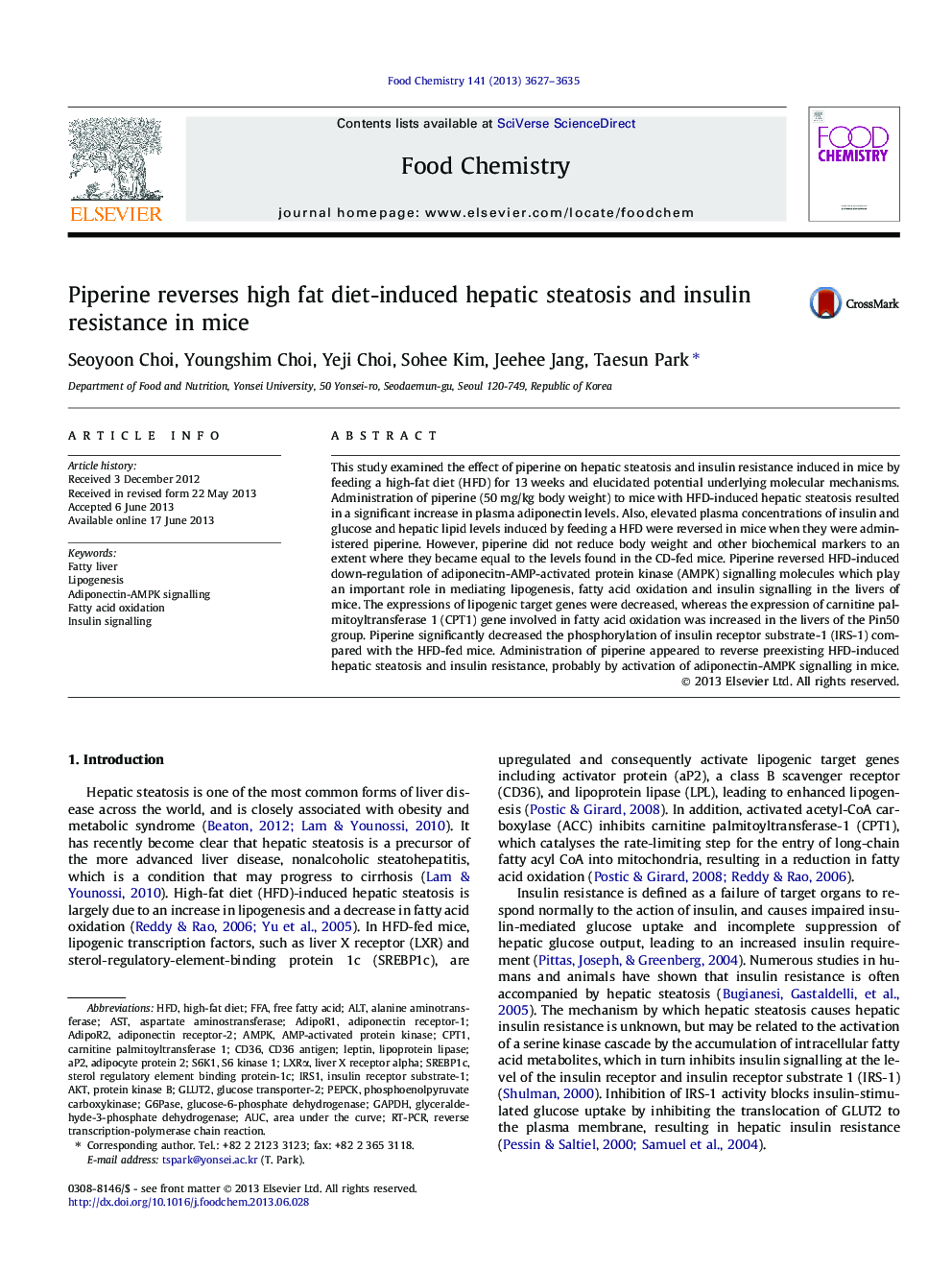| Article ID | Journal | Published Year | Pages | File Type |
|---|---|---|---|---|
| 10539826 | Food Chemistry | 2013 | 9 Pages |
Abstract
This study examined the effect of piperine on hepatic steatosis and insulin resistance induced in mice by feeding a high-fat diet (HFD) for 13Â weeks and elucidated potential underlying molecular mechanisms. Administration of piperine (50Â mg/kg body weight) to mice with HFD-induced hepatic steatosis resulted in a significant increase in plasma adiponectin levels. Also, elevated plasma concentrations of insulin and glucose and hepatic lipid levels induced by feeding a HFD were reversed in mice when they were administered piperine. However, piperine did not reduce body weight and other biochemical markers to an extent where they became equal to the levels found in the CD-fed mice. Piperine reversed HFD-induced down-regulation of adiponecitn-AMP-activated protein kinase (AMPK) signalling molecules which play an important role in mediating lipogenesis, fatty acid oxidation and insulin signalling in the livers of mice. The expressions of lipogenic target genes were decreased, whereas the expression of carnitine palmitoyltransferase 1 (CPT1) gene involved in fatty acid oxidation was increased in the livers of the Pin50 group. Piperine significantly decreased the phosphorylation of insulin receptor substrate-1 (IRS-1) compared with the HFD-fed mice. Administration of piperine appeared to reverse preexisting HFD-induced hepatic steatosis and insulin resistance, probably by activation of adiponectin-AMPK signalling in mice.
Keywords
CD36S6 kinase 1LXRαAdipoR1IRS1GLUT2G6Paseaspartate aminostransferaseCPT1S6K1PEPCKAP2AMPKHFDALTSREBP1cADIPOR2FFART-PCRGAPDHAMP-activated protein kinaseAUCASTAlanine aminotransferaseAktFree fatty acidinsulin receptor substrate-1Fatty acid oxidationhigh-fat dietInsulin signallingphosphoenolpyruvate carboxykinaseLeptinLipoprotein lipaseLipogenesisarea under the curvereverse transcription-polymerase chain reactionadipocyte protein 2Sterol regulatory element binding protein-1cprotein kinase BCarnitine palmitoyltransferase 1liver X receptor alphaFatty liverglucose-6-phosphate dehydrogenaseGlucose transporter-2glyceraldehyde-3-phosphate dehydrogenase
Related Topics
Physical Sciences and Engineering
Chemistry
Analytical Chemistry
Authors
Seoyoon Choi, Youngshim Choi, Yeji Choi, Sohee Kim, Jeehee Jang, Taesun Park,
